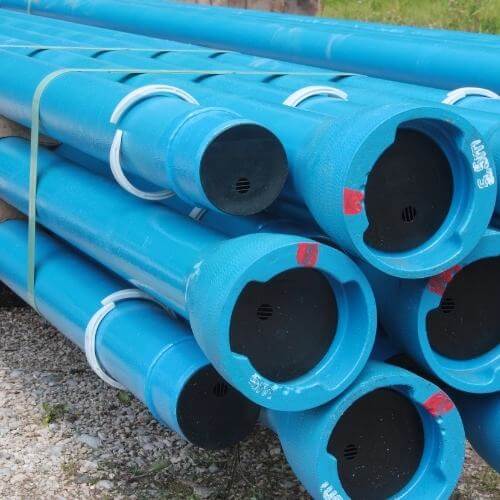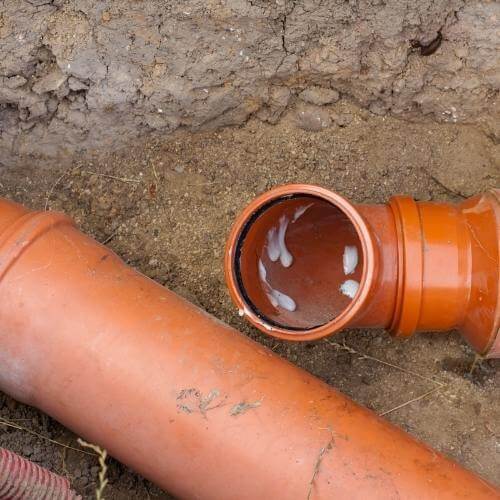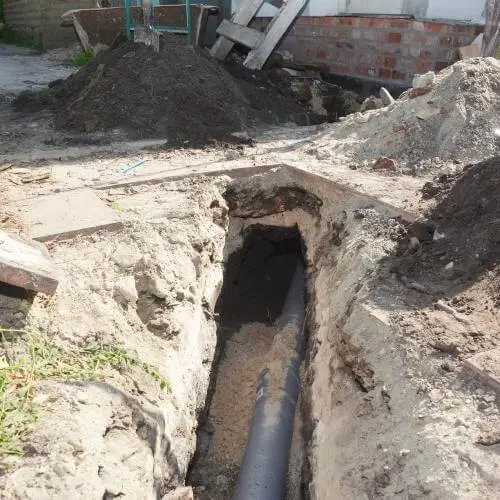Sewer pipes are a very specific subject especially when it comes to proper installation of them. While there are a ton of concerns to keep in mind when engaging with an operation such as this, one of the less prevalent ones will usually be tied to their positioning.
If you are doing the sewer pipe installation on your lonesome, there are quite a few factors you should know about which includes proper angles to install them at. That’s why we’ll be looking at some of those right here, starting with 90 degree turns in sewer lines.
Can you put a 90 degree turns in sewer lines and how do they impact your home?

Having a 90-degree turn in your pipes refers to the sections of the pipe being connected at this angle. The 90-degree turn should never be used for the sake of plumbing, apart from one exception we’ll mention later.
-
90 Degree Turns in Sewer Lines
These bends are too severe for a lot of materials flowing through our pipes. Water can end up accumulating if the pressure isn’t managed well.
Don’t think you’ll be doing much better with debris and other flushable materials, they will travel at slower speed than water which results in them not being carried away.
The sediment will form all around and can even cause damage to pipes themselves due to the sudden shifts in flow.
-
Alternative approaches

If you are making a vertical connector for your pipe, you can use 90 degree elbows. This elbow is a great way to connect a horizontal pipe to a vertical drop. It gives a swift switch in altitude to your water which won’t run into the issues you’d have when using 90 degree turns between two horizontal pipes.
However, they needn’t be your go to considering other options could yield better results, but it’s good to have it available in case the structure of your installation ends up being too inflexible to alter.
These will usually be utilized for the toilet drain angle which will allow us to connect the toilet to the rest of the system with no hassle. Otherwise, consider the variants with 45 degree bend instead as a way of connecting vertical drops.
The configuration and the calculations of your sewer pipes are a very important part of the whole subject. Even if you keep the angles of your turns and connections in a more reliable sphere, the other factors could end up invoking issues. These issues can sometimes stem from elevation and slope of our sewer pipes.
The elevation itself is something that can make the entire system work at a much worse pace than it usually would. With the elevation of your main drain, you can heavily hamper or enhance the flow of water and other materials through the system.
The most common issue is one of improper elevations screwing with the pressure of the household to a point where the flushed water doesn’t have enough of a proper drop when compared to the other end of the pipe.
This other end is connected directly to the area’s sewer system. If materials can’t flow freely into the wider sewer web, they could accumulate below our homes.
As for the slope of your sewer pipes, it has no less importance than elevation itself. Obviously, the elevation and length of the pipe will affect the slope but it should always be maintained at a certain percentage. Otherwise, we can face multiple problems of a similar make as previous ones as well as some new issues.
As far as the issues go, they are not much different than those of a slope that’s not steep enough. It’s possible to experience clogs because the liquids travel too fast while solids get left behind.
The problem is only made bigger with the common problems we could encounter with the sewer pipe systems. One such example is hard water.
Combining hard water with a slope that’s either too big or too small can lead to extremely quick accumulation of debris. The process of its removal can be pricey and troublesome.
To reiterate, the 90 degree elbow can be used for vertical drops but comes with a ton of issues if used elsewhere. The calculations should be made for slope and elevation before the actual pipes are laid to make sure the drop isn’t too steep or not steep enough. Now, let’s see how another piece of sewer pipe bends fits into the plumbing installation process. [1]
The 180 bend and sewer traps

On the other hand, we also have 180 degree turns which can cause just as many if not more problems. The issues present in 90 degree turns reappear here as well. You will find a ton of potentially troublesome clogs and headaches if one of these is installed improperly.
There are niche situations where the bend as sharp as this is to be used but those also come with special formations between the 180 degree turn and the rest of the pipe.
The situations where a turn such as this could be used would be one where it’s utilized as a sewer trap to prevent the sewer gases from entering your home. This area of the pipe fills with a bit of water with every use which assists it in trapping gases from entering your home. Of course, this still comes with a few caveats.
The most important being that these traps are outdated. [2]
Their use has had a sharp decline as the technology advanced so now there are scant situations where your home should have a trap rather than a dedicated way of filtering out gases.
The traps present a dangerous spot for clogs to happen, despite the utility of water accumulating in your pipes the issues this brings with itself remain.
The blockage can be troublesome to unclog due to their style of installation and if they are installed underground this problem becomes even more annoying to deal with.
In case you are having issues with your house trap, contact an inspection immediately. The newer features and devices provided by modern plumbing techniques should be used instead of it when you get a chance to fund the new installation but just establishing the current issue can prevent it from getting out of hand.
The trap can also hamper other parts of the pipe by reducing approachability the plumbing teams will have to deeper pipes once it clogs. Suffice to say, these are issues you wish to avoid if you want to maintain your home’s house pipes as well as possible.
How should you do your bends in underground drainage?

So what are the best ways to go about installing bends in underground drainage? Well, for horizontal turns you want to keep the angles of the connectors on the lower side if possible.
As we’ve seen, the plumbing 90 degree elbow can be used for vertical drops in some situations without causing too many issues but the horizontal bends are a different story. A buried 90 degree horizontal bend is a problem only made worse due to the harder accessibility of the segment. Installing one increases the chances of clogs while more elegant solutions already exist.
Instead of going for a steep angle of 90 degree bends, you should consider installing two 45 degree bends. We mentioned this above but it pays to reiterate. Furthermore, let’s cover how it actually works.
Obviously you won’t have the two bends neck to neck, that’d defeat the purpose of the whole process. What you instead do is insert a piece of straight pipe between the two, thus improving flow and reducing the overall clogging danger of the installation. It’s just a much better practice for plumbing to utilize these smaller angles across your pipe’s connections.
We should note that there’s still slope to keep in mind. You should be wary how the slope of your system will affect the installation process.
Odd calculations or improper assembly could lead to leaks or even sewer pipes separating at the connectors. Don’t rush the work and instead take time to revise how well the current setup you have will fit the plans you’ve made.
Read Next: How to Unclog Main Sewer Line Yourself
Conclusion
Going through the bends like these should help you be prepared when engaging in a DIY plumbing project. Either reinstalling the entire system or a fraction of it can prove difficult with so many options on the market.
By following the above information, the installation that comes as a result of your engagement should fit the standards of good plumbing practices. Not only that, you’ll be able to save money by removing potentially cloggy areas from the installation altogether.
However, do make sure to plan ahead before actually starting any plumbing works. This can save a lot of headaches once the job gets going.

Michael Davis is a heating & plumbing expert who currently works as independent contractor in SC. He also writes for Plumbertip.
For almost 10 years he worked on various plumbing tasks across South Carolina.


